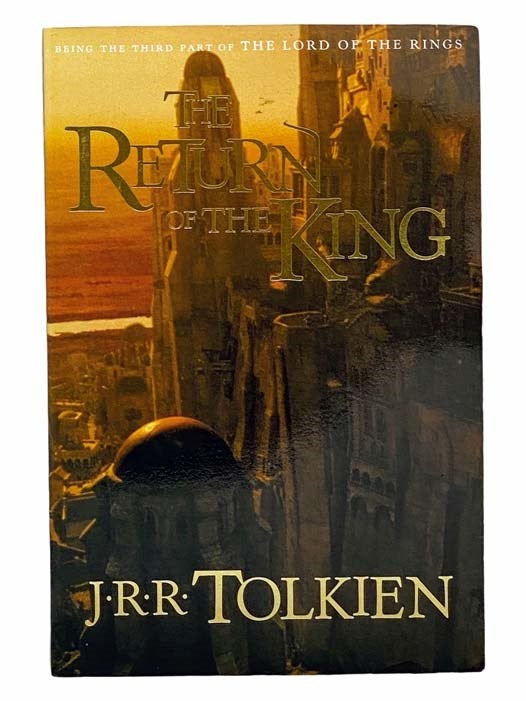
The Return of the King: Being the Third Part of The Lord of the Rings
Boston / New York: Houghton Mifflin Company, 1994. 1st Printing. Trade Paperback. Near Fine. Item #2306056
ISBN: 0618260285
First printing of this edition. Minimal cosmetic wear.
xii, [731]-1137, [7] pp. Synopsis of first two parts precedes text, paginated continuously with previous parts (since the 'trilogy' originally was written as one book), maps follow text. "The Lord of the Rings is an epic high fantasy novel written by philologist J.R.R. Tolkien. The story began as a sequel to Tolkien's earlier, less complex children's fantasy novel The Hobbit (1937), but eventually developed into a much larger work. It was written in stages between 1937 and 1949, much of it during World War II. Although generally known to readers as a trilogy, Tolkien initially intended it as one volume of a three volume set, with the other volumes to be The Silmarillion and Akallabeth; however, the other works were never fully completed and the publisher released in 1954-55 The Lord of the Rings as three books rather than one, for economic reasons. It has since been reprinted countless times and translated into many different languages, becoming one of the most popular and influential works in 20th-century literature. The title of the book refers to the story's main antagonist, the Dark Lord Sauron, who had in an earlier age created the One Ring that rules the other Rings of Power, as the ultimate weapon in his campaign to conquer and rule all of Middle-earth. From quiet beginnings in the Shire, a hobbit land not unlike the English countryside, the story ranges across Middle-earth following the course of the War of the Ring through the eyes of its characters, most notably the hobbits, Frodo Baggins, Samwise Gamgee (Sam), Meriadoc Brandybuck (Merry) and Peregrin Took (Pippin). The lands of Middle-earth are populated by Men (humans) and other humanoid races (Hobbits, Elves, Dwarves, and Orcs), as well as many other creatures, both real and fantastic (Ents, Wargs, Balrogs, Trolls, etc.). Along with Tolkien's other works, The Lord of the Rings has been subjected to extensive analysis of its themes and origins. Although a major work in itself, the story was only the last movement of a larger work Tolkien had worked on since 1917, that he described as a mythopoeia. Influences on this earlier work, and on the story of The Lord of the Rings, include philology, mythology, religion and the author's distaste for the effects of industrialization, as well as earlier fantasy works and Tolkien's experiences in World War I. The Lord of the Rings in its turn is considered to have had a great effect on modern fantasy; the impact of Tolkien's works is such that the use of the words "Tolkienian" and "Tolkienesque" has been recorded in the Oxford English Dictionary. The enduring popularity of The Lord of the Rings has led to numerous references in popular culture, the founding of many societies by fans of Tolkien's works, and the publication of many books about Tolkien and his works. The Lord of the Rings has inspired, and continues to inspire, artwork, music, films and television, video games, and subsequent literature. Adaptations of The Lord of the Rings have been made for radio, theatre, and film."
Price: $7.00
